
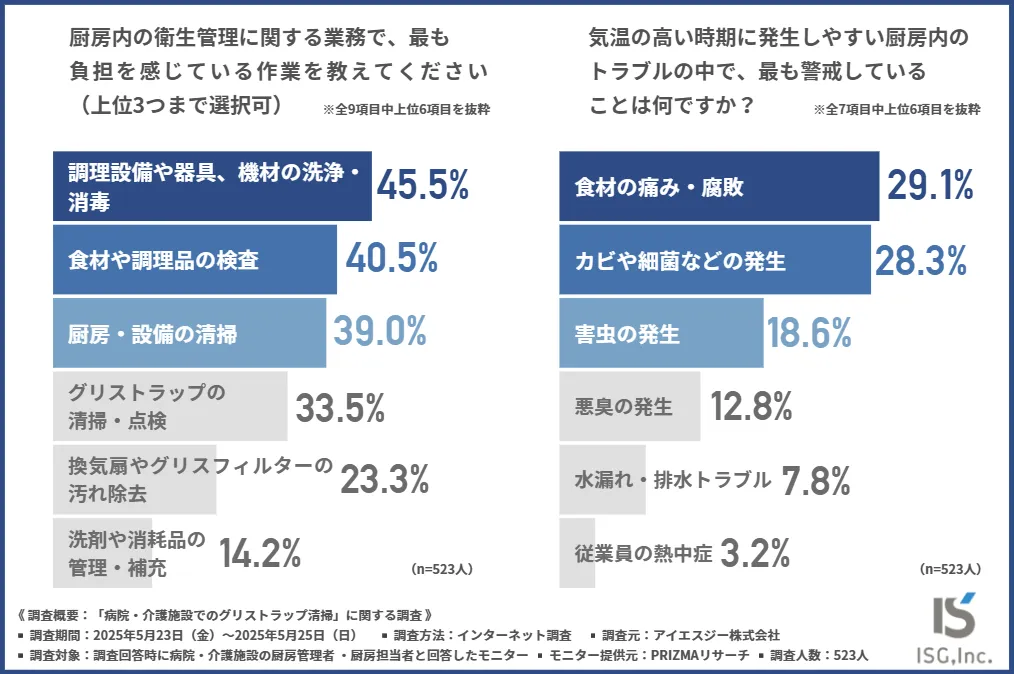
Hygiene Management in Hospitals and Care Facilities: Challenges and Insights
Understanding the Challenges of Hygiene Management in Hospital and Care Facility Kitchens
As temperatures rise during the rainy season and summer months, the need for strict hygiene management in hospital and care facility kitchens becomes increasingly critical. A recent survey conducted by ISG Corporation sheds light on the major challenges faced by kitchen managers in maintaining sanitary conditions. With reports of humidity, unpleasant odors, and pest infestations, there is an urgent call for effective cleanliness measures.
The Importance of Hygiene in Kitchens
Hospitals and care facilities must maintain a clean kitchen environment to ensure food safety for patients and clients. However, the demands of daily operations often overshadow the need for meticulous hygiene oversight. The survey aimed to identify the challenges faced by kitchen staff in managing cleanliness effectively and the growing reliance on employees for sanitary practices.
Survey Overview
The research, titled “Kitchen Hygiene in Hospitals and Care Facilities,” was conducted from May 23 to 25, 2025, involving 523 respondents who are kitchen managers and staff. Data collection was facilitated through the PRIZMA internet platform. The results paint a concerning picture of the current state of kitchen hygiene in these critical environments.
Key Findings
1. Daily Hygiene Burdens: When asked about their biggest hygiene-related burdens, 45.5% of respondents cited cleaning and disinfecting cooking equipment, while 40.5% mentioned inspecting food products, and 39.0% highlighted the cleaning of kitchens and facilities. This indicates a heavy workload associated with maintaining visible cleanliness.
2. Major Concerns During Summer: Survey participants identified their foremost worries during the warmer months, which include food spoilage (29.1%), mold and bacterial growth (28.3%), and pest infestations (18.6%). The combination of higher temperatures and relevance to patient health raises the stakes for hygienic management in these settings.
3. Experiences of Risk: Alarmingly, about 91.2% of respondents acknowledged having encountered dangerous situations regarding hygiene management. This reflects the inherent difficulties staff face in upholding sanitary measures given their demanding routines and the critical nature of their service.
4. Insufficient Hygiene Management: A staggering 94.6% of kitchen staff feel they are not executing their hygiene management responsibilities effectively enough. This perception stems from a combination of factors, including overwhelming workloads (50.5%), insufficient staffing (42.4%), and inconsistent adherence to existing hygiene guidelines (37.6%).
Role of Staff in Grease Trap Cleaning
A significant area of concern highlighted in the survey relates to grease trap cleaning. Grease traps play a crucial role in preventing plumbing issues and the spread of odors in kitchens. Alarmingly, 76.3% of participants reported that kitchen staff, without specialized training, were responsible for cleaning these critical components.
Anxieties Pertaining to Employee Conduct
When staff were asked about their confidence in this arrangement, many expressed concerns regarding the risk of secondary contamination, odor impact on health, and insufficient post-cleaning disinfection protocols. These fears highlight a gap in the training and expertise needed for such specialized tasks.
Demand for Professional Services
In light of these findings, the survey revealed that nearly 90% of participants would prefer grease trap cleaning to be handled by professional services in the future. The primary benefits perceived include reduced hygiene risks, improved cleaning standards, and better overall kitchen management.
Moving Towards Sustainable Hygiene Practices
The survey makes it clear that there is a need to shift away from dependency on employees with limited training for tasks as critical as grease trap cleaning. Hospital and care facility kitchens require structured hygiene measures that can only be achieved through specialized partnerships.
Embracing outsourced cleaning services not only alleviates the burden on employees but also ensures a higher quality of sanitation, thus providing a safer food environment for all patients and clients.
Finally, as organizations evaluate their cleaning protocols, they should prioritize companies that offer thorough, safe, and regulated practices to uphold sanitary conditions adequately.
Conclusion
The findings from this survey by ISG Corporation highlight the pressing need for a robust and sustainable cleaning framework within hospital and care facility kitchens. It is clear that moving towards our goal of systematic hygiene management will enhance food safety standards and ultimately safeguard patient health during the critical summer months.
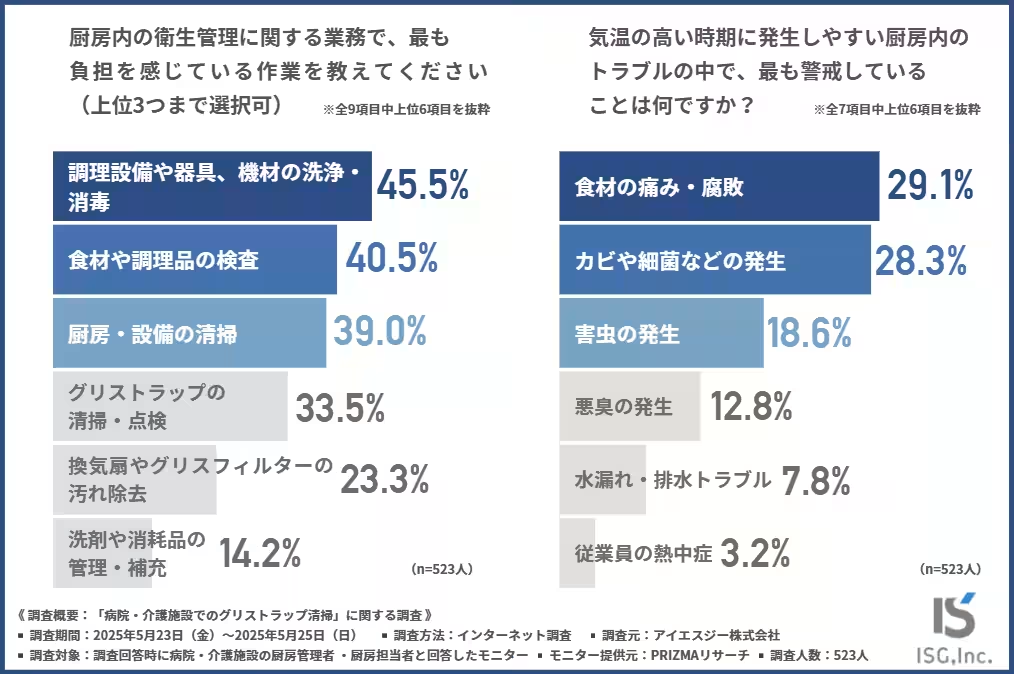
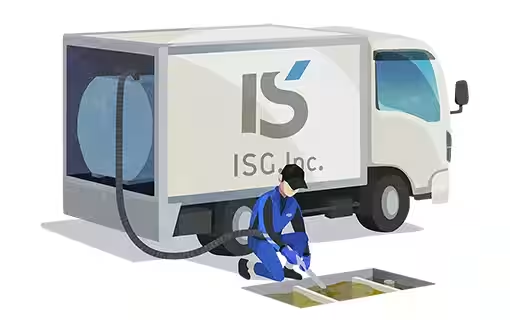
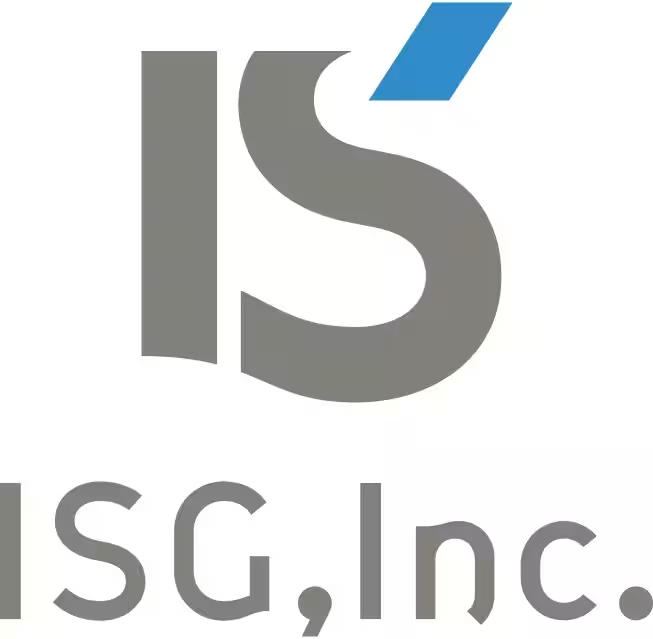

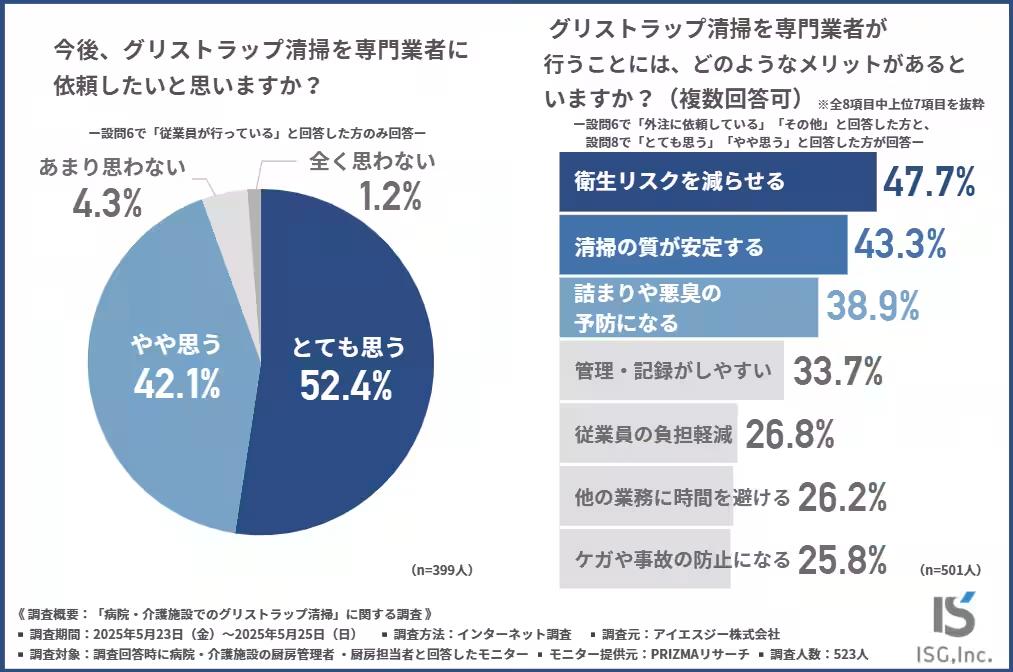
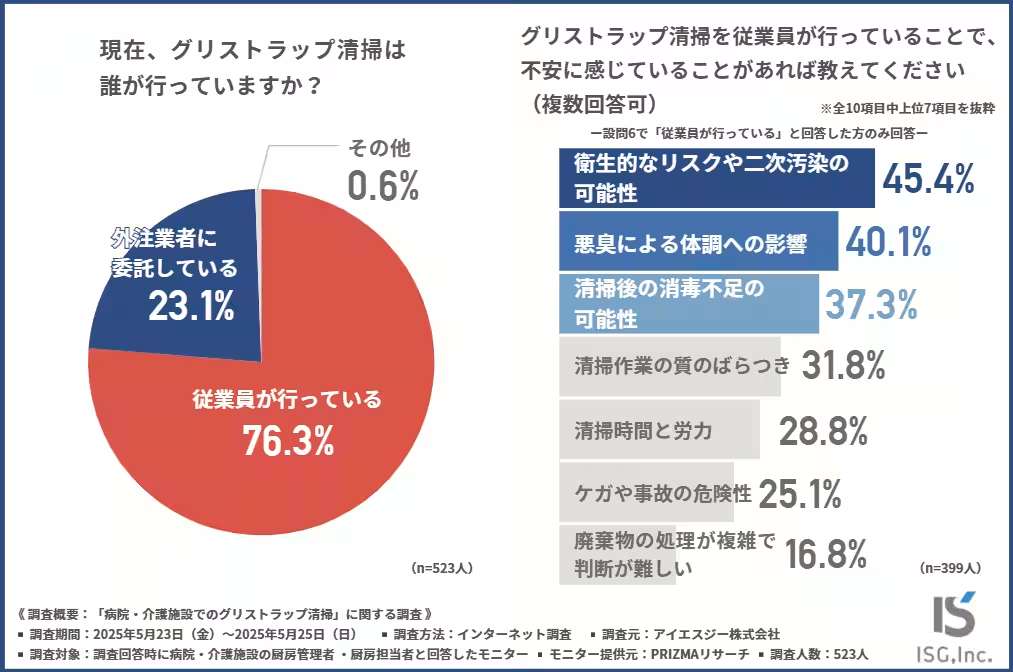

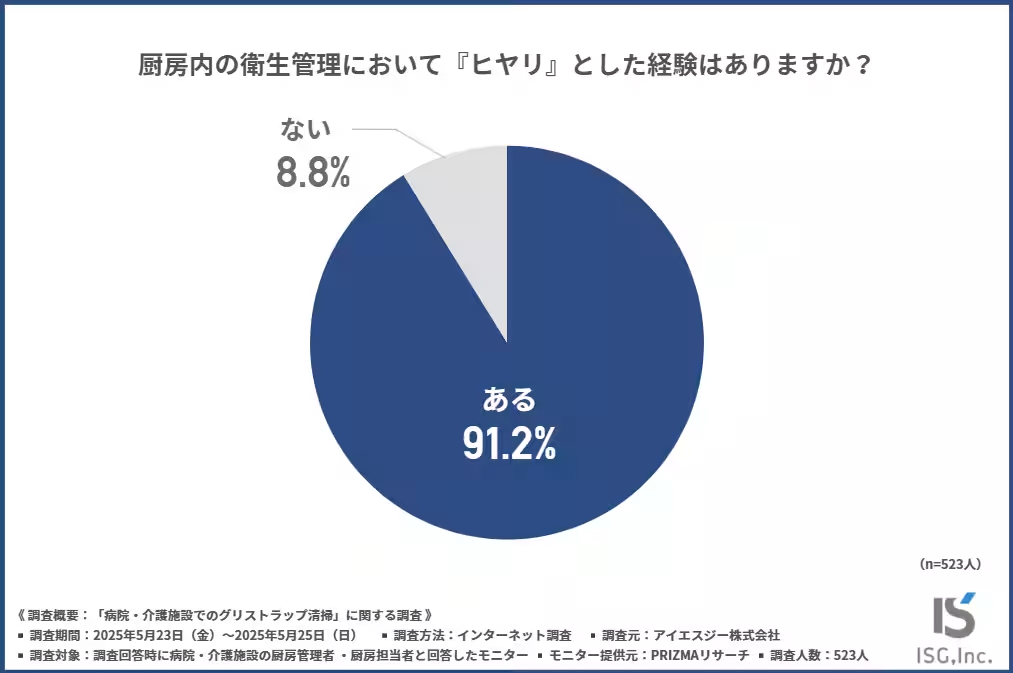
Topics Health)










【About Using Articles】
You can freely use the title and article content by linking to the page where the article is posted.
※ Images cannot be used.
【About Links】
Links are free to use.